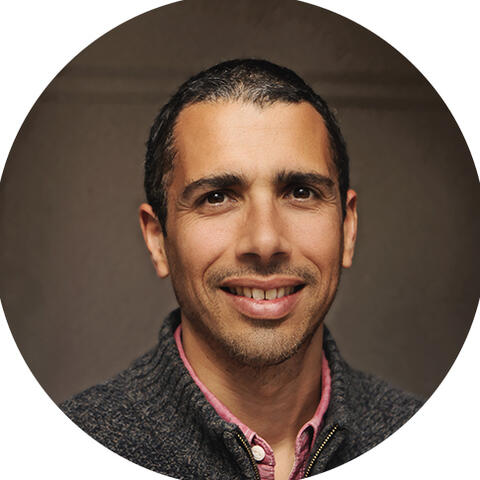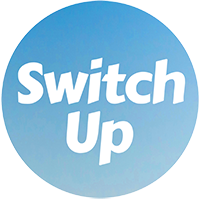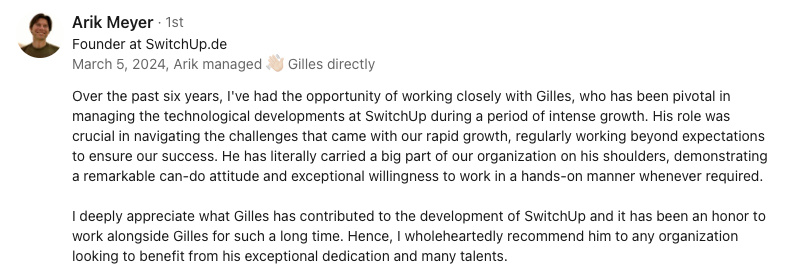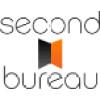Abstract:
The article advocates for "minimalist niche clarity" as the key for tech professionals to stand out and thrive, emphasizing that success comes not from piling on specialties or serving every possible client, but from stripping away distractions to reveal the intersection of one’s strongest skills, values, and ideal audience. Unlike traditional specialization, this approach focuses on clarity and intentionality, using frameworks like essentialism, the 80/20 rule, and tools such as the Value Proposition Canvas to help professionals refine their offerings. The article combines practical advice with relatable stories and examples—such as brands like Basecamp and Mailchimp, and individuals like Patrick McKenzie and Julia Evans, who succeeded by narrowing their focus—and even includes a personal anecdote about applying the principle of focused subtraction from the author’s physics background and fitness routine. It highlights the psychological and business benefits of this clarity, including easier recall, greater trust, and higher rates, while warning that being a generalist often leads to being overlooked. To stay adaptable, the article recommends regular feedback, market check-ins, and small experiments, drawing on frameworks like Ikigai to ensure growth doesn’t dilute the core message. Ultimately, minimalist niche clarity is presented as an ongoing process that brings more rewarding work and personal satisfaction by doing less, but with greater intention and impact.
Finding the right niche as a tech professional can feel overwhelming—like standing in front of a crowded buffet, not sure what to put on your plate. Many of us try to pick a specific industry or technology, but minimalist niche clarity is really about finding the unique intersection of your skills, values, and the people you want to help. It’s not about stacking up more labels; it’s about stripping away distractions so your strengths stand out. This article is a high-level primer on why clarity and trust matter for independent tech professionals, with practical frameworks and real stories from my own journey.
You’ll see how focusing deeply (instead of doing a bit of everything) can lead to more growth, less stress, and a stronger sense of purpose. I’ll share frameworks, examples, and a few honest moments from my own career—both the wins and the wobbles.
Minimalist niche clarity
What makes minimalist niche clarity different
For independent tech professionals, “finding your niche” usually means picking an industry or tool—like “mobile apps for retail” or “AWS consulting.” But minimalist niche clarity goes further. It’s about pinpointing the sweet spot between your strongest skills, your core values, and the specific audience you want to help—and doing it as simply as possible.
Instead of just saying, “I’m a backend developer,” minimalist clarity might sound like, “I help privacy-focused startups build secure healthtech platforms.” The difference is immediate: your unique value is obvious to the right people. Tools like the Value Proposition Canvas can help map out what you really offer, who benefits, and why it matters. This is much deeper than picking a specialty at random and hoping it sticks.
Minimalist niche clarity is about removing what’s not needed. It means dropping services, audiences, and messages that don’t fit. I think of it like carving a sculpture from a block of wood—chipping away until only the essentials remain. The essentialism framework and the 80/20 rule both suggest that letting go of distractions allows your true expertise to shine. In fact, a recent survey found that 80% of freelance tech professionals report higher satisfaction after narrowing their service offerings. That statistic rings true for me.
There are real psychological upsides, too. By letting go of extra options, you avoid endless decision-making and can dive deeper into creative work. It’s a bit like opening your wardrobe and seeing only your favorite clothes—less stress, fewer choices. I remember when I first started my science popularization company in Beijing. I tried to offer every kind of workshop and consulting service under the sun. The result? I was exhausted, and my message was muddled. Only when I focused on one core offering—interactive science events for schools—did things click. Suddenly, I had more energy, and clients knew exactly why to call me.
Take a hypothetical example: instead of saying “full-stack developer for SaaS,” narrow it down to something like:
- Privacy-first backend developer for healthtech startups
Now your offer is sharper and easier to remember. Clients who want this know they’ve found their person. This kind of clarity helps you stand out, attracts the right people, and often leads to more incoming requests for your services. Minimalist niche clarity can really give tech professionals a boost.
The superpower of being unmistakable
Minimalist niche clarity makes you easy to recognize and recommend. When you’re tied to one clear thing, you become the go-to specialist for that need. I’ve seen this firsthand. Back when I was CTO in Berlin, I spent months juggling multiple projects—IoT, e-commerce, even a failed attempt at a travel app. But the moment I focused the team on a single SaaS product for small retailers, everything changed. Our pitch was clear, referrals increased, and we finally started getting inbound leads from people who’d heard about our expertise.
Simple messages stick. Data shows that specialists are remembered and trusted more easily than generalists. People naturally gravitate to clarity, and a straightforward offer builds trust. Studies and surveys continue to show that specialists are referred more often and get more repeat projects than generalists.
- Specialists get invited for bigger and more important jobs
- They tend to get better rates and returning clients
Generalists, even though they can try more things, often blend in. I used to fear missing out on work if I narrowed my focus. But the evidence—and my own experience—shows that a clear, focused niche leads to better business: more visibility, more trust, and steadier growth.
Why generalism feels safe but limits growth
The comfort trap of doing everything
Some tech pros try to cover many services or audiences, thinking it keeps their options open in case work dries up. On paper, this looks safe. But offering everything to everyone often just creates more confusion and tough competition, rather than security. Trying to be all things to all people can become a hidden trap that actually slows down your growth.
I remember the anxiety of letting go of certain projects when I left a corporate role in Lisbon to go independent. There’s a real fear—what if I say no to a project and regret it later? What if the work dries up? But the reality was different. The more I narrowed my focus, the more the right kind of work found me. The stress of juggling too many things faded, replaced by a sense of relief and, honestly, a bit of excitement every time a client reached out for exactly what I offered.
This wide-net approach tends to backfire. You find yourself up against lots of competitors, all offering similar general services. As a result, standing out gets harder. Clients who need a very particular skill will recall someone with a clear specialty, not someone with a dozen vague offerings. Specialists benefit from what’s called the “distinctiveness effect”—people remember what’s unique.
Industry reports echo this. Data shows generalists rarely get picked for the high-value or long-term work. Recent freelance studies reveal that specialists create more loyal and higher-paying client relationships. Generalists might get asked about a lot of odd jobs, but the best opportunities typically go to those with a clear focus.
The science of trust and recall
Cognitive science helps explain why specialists are easier to recognize and trust. When your area of expertise is clear, it pops out in someone’s memory—like a bright splash of color in all the grey. Generalists don’t stick out, because their skill set is too spread out. This makes a difference in business: people naturally pick those with focused strengths.
Minimalist clarity isn’t just about being remembered. It also signals confidence, reliability, and higher value. When you present your niche in a simple, direct way, it tells clients you know your stuff. Clients also feel better about what they’re getting, and they’re willing to pay more for it.
In my own work, I started tracking client satisfaction scores after each project. When I was offering a bit of everything, the feedback was lukewarm—“good, but not quite what we needed.” Once I focused on data-driven product strategy for early-stage startups, my scores jumped, and clients started recommending me to their peers. That shift was both validating and a little scary, but it made all the difference.
The art of ruthless subtraction
Frameworks for sharper focus
Once you know what you’re offering, it’s time to get picky. A structured brand audit is a practical way to decide what to keep and what to let go. Here’s how I approach it:
- List every service and product you offer (I used a messy spreadsheet at first)
- See how each one performs—look at revenue, client happiness, and how much energy it costs you
- Ask clients what they really value (sometimes their answers surprise you)
- Check where competitors overlap or leave gaps
Making it all visible really helps you decide what to keep and what to leave behind. I remember doing this exercise in Berlin, and realizing that my “side” analytics consulting was actually my main source of both income and satisfaction. Everything else was just noise.
Another approach is the Essentialism mindset—“less but better.” The idea is to list what you do, judge what gives the most benefit, cut what’s not important, and focus on the most valuable actions. This narrows your energy and time to what matters most. When I finally dropped the low-margin, high-stress projects, my calendar opened up—and so did my headspace.
The 80/20 rule, or Pareto principle, suggests about 80% of good results come from just 20% of your work. If you can figure out which things belong in that top 20%, you can stop wasting time on the rest. For me, tracking which services led to repeat business and referrals made it obvious where to focus.
If you like visuals, the Service Portfolio Matrix helps. It lets you map your services based on how attractive they are in the market and how well you do them. The best ones are clear winners; the rest can be set aside.
Stories of subtraction and growth
Basecamp shows what focus can do. They used to offer a range of products but shifted to just one—their main product. This made things simpler and improved quality and profits.
Mailchimp followed a similar route, choosing to focus on email marketing for small businesses. This clarity turned them into a leader in that space, and growth took off.
Even freelancers see the benefits. Patrick McKenzie homed in on email deliverability for SaaS companies, and Julia Evans focused on technical zines. Their specific focus made them experts in their niche, which opened new doors and boosted what they could charge.
Letting go is not always easy—it might mean refusing some work or revenue. I’ve had to turn down tempting projects that didn’t fit my focus, and it always stings a bit. But every time, the long-term results have been worth it: more meaningful work, stronger relationships, and less burnout.
Magnetic positioning through minimalist clarity
How clarity attracts the right clients
A brand that is super clear stands out quickly to those searching for that exact answer. Minimalist clarity acts like a signal—easy for others to pick up and recommend. This tends to happen by itself: when your message is simple, specific people know to come to you.
Buffer excelled by sticking to social media scheduling, and ConvertKit focused on email marketing for creators. This single-minded approach sparked their growth, with more people talking about them and recommending them. Nathan Barry, ConvertKit’s founder, credits a lot of their organic growth to being clear about what they do. Rand Fishkin’s path with Moz follows this idea, too.
Clarity brings more than just attention. It creates trust. When your offer is easy to understand, clients feel certain they found the right person. There’s relief in knowing you don’t have to dig through lots of options—just one clear solution. This makes work smoother and less stressful for both sides.
The unmistakable advantage
Offering one clear solution makes you hard to miss. It’s like being the only bakery with a unique bread in the neighborhood—everyone knows where to go for it. The effect is that you’re picked first, remembered more, and recommended more.
Financially, the focused approach pays off. Those recognized as specialists not only draw more interest but can also charge better rates and set up stronger client bonds. Clients want to work with the best in a field, not someone who dabbles in everything.
This isn’t just theory. When I was running my e-commerce platform in Lisbon, we tried to be everything to everyone at first—fashion, electronics, even pet supplies. It was chaos, and we struggled to get traction. The turning point came when we focused solely on sustainable home goods. Suddenly, our messaging was clear, our marketing costs dropped, and we grew without needing outside funding. That focus didn’t just help the business—it gave me back my evenings and weekends, too.
Staying dynamic with minimalist clarity
Avoiding the boxed-in trap
Minimalist niche clarity helps you stand out, but if things shift, it can feel limiting. That’s why it’s smart to keep checking in with your chosen focus. Regular check-ups make sure you’re not getting stuck with a niche that no longer fits. And there are concrete ways to make this easier.
What can you do over time? Try the following:
- Set up ways for clients to give regular feedback (I use a simple Google Form after each project)
- Watch what’s happening in your market and with competitors
- Plan strategy checkups every six to twelve months, maybe using tools like SWOT for analysis
This helps make sure your niche stays right for you, and you’re able to adapt if something changes. Feedback, especially, helps you spot when it’s time to shift.
Trying small experiments is another way to stay flexible. Test a new offer or service in a limited way. See how it goes before changing your whole strategy. Agile ideas, inspired by the Lean Startup approach, say to try little things, learn, and adjust. It’s a bit like planting a small patch in your garden to see what grows before farming the whole field.
I’ll admit, working independently can get lonely sometimes. In Berlin, I found myself missing the casual chats and support of a team. To stay balanced, I set up regular calls with a few other solo founders—sometimes just to vent, sometimes to swap ideas. That small circle helped me stay sane and reminded me that clarity isn’t just about business—it’s about building a life that feels good.
Expanding without losing your core
Frameworks like Ikigai and the Brand House make it easier to add new elements to your niche without losing focus. Ikigai helps you see where what you enjoy, what you’re good at, what’s needed, and what pays all come together. The Brand House lays out your main message with a few supporting ideas underneath. With these, it’s possible to add new layers while staying clear on what you stand for.
Some professionals pull this off well. Marie Forleo started as a life coach and then moved into business and marketing but kept her central message the same. Dr. Rangan Chatterjee shifted from medicine to broader health media, but his core idea—helping people take charge of their health—never changed.
The secret to expanding mindfully is to make sure each new offering fits your main purpose. New services should add to your expertise, not distract from it. If you do it well, your brand gets stronger and more resilient—letting you grow while staying true to yourself.
Practical exercises for defining your niche
Reflective prompts for minimalist clarity
Before landing on a niche that fits, take a step back and look at your strengths and personal values. The Ikigai model is an easy way to start. Reflect on these questions:
- What do you love?
- What are you good at?
- What’s needed in the market?
- What can pay the bills?
Matching your answers helps you find a niche with passion and real-world demand.
Then, pinpoint your audience and the main problem you solve. Strengths and values assessments like CliftonStrengths or VIA can help uncover what makes you unique. This makes your niche more likely to fit you, not just look good on paper.
With a rough idea in mind, test it out. Sketch your ideal client and the key problem you solve, then sum it up in a quick one-liner or pitch. For example: “I help privacy-focused startups build secure healthtech platforms.” Simple statements stick—and make your niche clear at a glance.
Validating and refining your focus
Now try out your new niche idea in real life. You could:
- Talk to clients—ask what they think
- Send out informal surveys
- Launch a small test run to see if there’s interest
Getting honest input can show what feels right, or what needs tweaking.
Feedback is just the start. Keep improving your personal brand statement as you learn, always aiming for clear, memorable, and relevant. Templates and frameworks can help with this refining.
Remember: sharpening your niche is a journey, not a one-and-done project. Set regular reviews, keep tracking simple goals, and as you gain insights, keep tuning your brand. More exercises and ideas are available in the next parts of this series.
Minimalist niche clarity is about doing less, but with intention. By homing in on your skills, values, and who you want to help, you can stand out without needing to chase every possible client. Cutting back and using frameworks like essentialism and the 80/20 rule brings sharper focus and a clearer mind. Stories from brands and pros alike show this leads to better work, stronger relationships, and—sometimes—a bit more joy. Staying flexible means you’re ready for whatever comes next, while still keeping your focus sharp. If you trimmed just one unneeded service or message, what kind of clarity could it bring to your brand? For me, every time I’ve made that cut, it’s felt like opening a window and letting in fresh air—scary at first, but always worth it.














